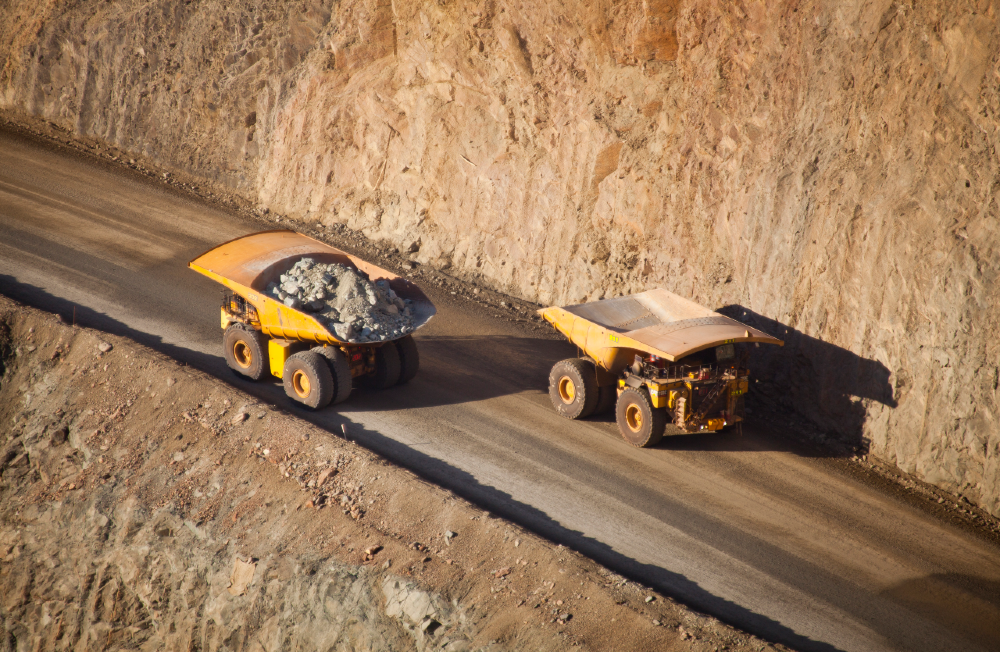
There is huge potential for efficiency gains by optimising payload capacity on mine sites. Tom Smith, engineering manager of mining equipment manufacturer Schlam, discusses where this potential can be found and reveals his top five hacks for mining businesses looking to make efficiency gains.
Unlocking payload potential
“The most common area of inefficiency in payload management is understanding the ways a truck’s payload can be maximised or optimised,” says Smith. The weight of the truck is an obvious factor, but Smith explains that it is important to consider other areas too, including the tray’s design life and the relative sizing of existing equipment. Operators can access huge potential when they understand where there is value to be unlocked.
One of the most common mistakes that operators traditionally make is not appreciating the impact that truck body design can have on the efficiency of any mining operation. This leads to the use of heavy, or incorrectly sized equipment, reducing the amount of ore that can be carried per cycle, which threatens efficiency.
According to Smith, operators have started to recognise this over the past five years. “There’s been a mindset change recently,” he observes. “People now understand the importance of going with a custom-designed, lighter-weight body.” This is the first step towards prioritising payload efficiency. The next step will be for operators to identify and access the maximum potential of their mines, taking into account operational, machinery and strategic factors.
With this mindset change leading mine operators towards more efficient operations, how should they plan their approach?
1.Understand your strategy – and stick to it
Along with understanding their options, operators need to have a clear idea of their aim.. Setting out a plan for a mine site and sticking to it is essential to realise the full value of the site. Smith recommends having a clear payload strategy and adhering to it.
2.Communicate
“There’s no point in making changes at the top if the people who are hauling the material and loading the trucks don’t understand that they can put an extra five or ten tonnes in there,” Smith points out. Once the strategy is in place and the equipment is there to support it, communication is critical.
Onsite communication allows for a productive feedback loop, where the target is made clear, and gaps can be identified and addressed.
3.Optimise pass-matching
Strategy must be supported by smart decision-making that pays attention to the details. Pass-matching between loading equipment and hauling equipment is a crucial factor often overlooked by operators, Smith explains. This means selecting the right-sized buckets and bodies for the mine site’s operations and density. “Targeting a payload on the site that requires 3 ½ passes of a loading unit is an inefficient way of loading a truck,” Smith points out.
4.Choose lightweight bodies
Mine owners must “understand the real value of hauling additional material per cycle versus the cost of overhauling and extending the life of heavier dump bodies,” says Smith. Traditional dump truck bodies designed to last indefinitely were built strong and heavy and required regular overhaul and maintenance. Lightweight bodies mean a greater payload. “If you’re carrying an extra five tonnes in your dump body, every cycle, twice an hour, 6,000 hours a year, the return on investment could potentially be measured in weeks or months rather than years,” Smith points out.
5.Measure your efficiency
The amount of data now available to miners has grown exponentially over the last five years. This allows effective communication supported by clear and relevant metrics. By measuring hauling capacity and feeding that information back to operators, people are motivated to continue working towards the operating target. Here the old industry adage of “what gets measured is what matters” applies.
Putting the hacks into practice
Schlam helps operators capitalise on their opportunities in a number of key ways. First, it supports its clients to understand the potential efficiency gains for their payloads and what the market has to offer. “We can help people understand what the benefits are and how we can help them unlock those benefits,” says Smith.
Then Schlam’s rigorous and customised approach to providing solutions allows customers to realise these efficiency gains. “Our products are custom designed from the ground up for every single mine site,” Smith explains. “As part of our design process, we collect every piece of information we can to ensure that our product is the optimum design for a site’s given strategy.”
Schlam can also support the communication that underpins all of this. “We’ve put together presentations about best ways to load to maximise your payload, with great success,” says Smith. In short, while its clear that more attention is being paid to payload optimisation, “we are working in partnership with our clients to continuously improve the efficiency of a mine site”.


